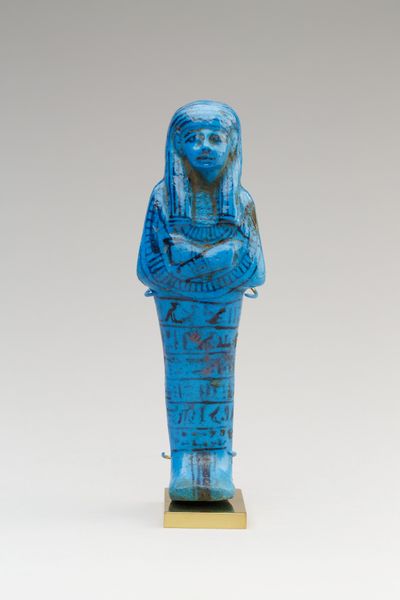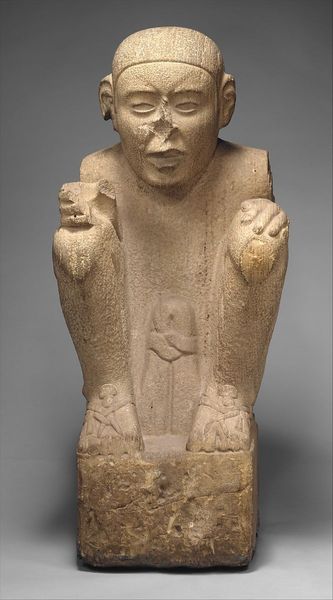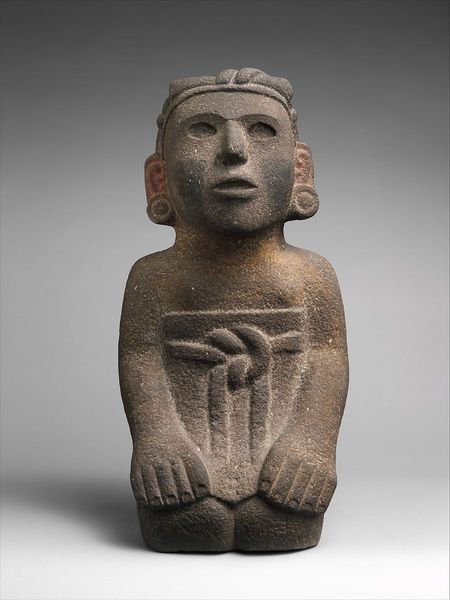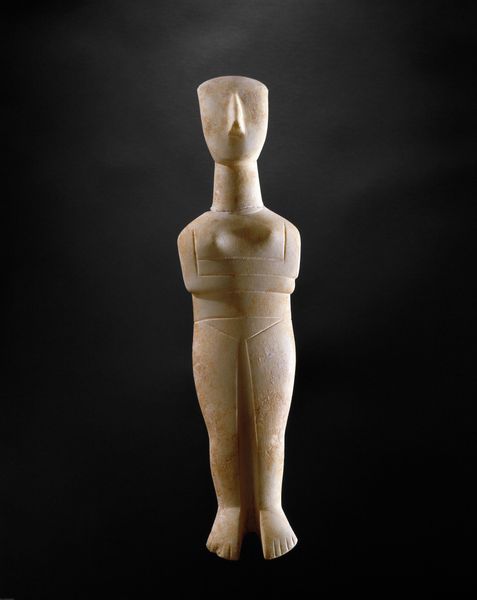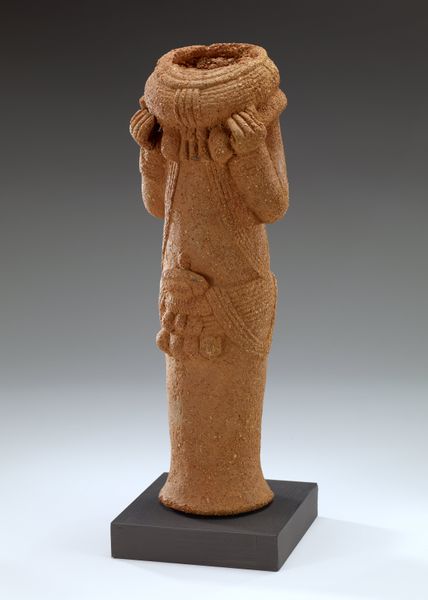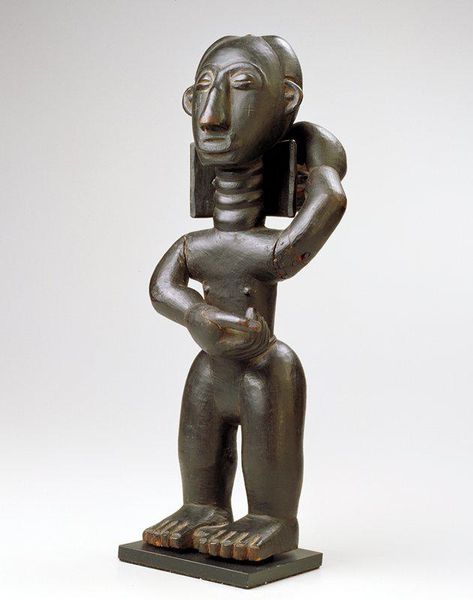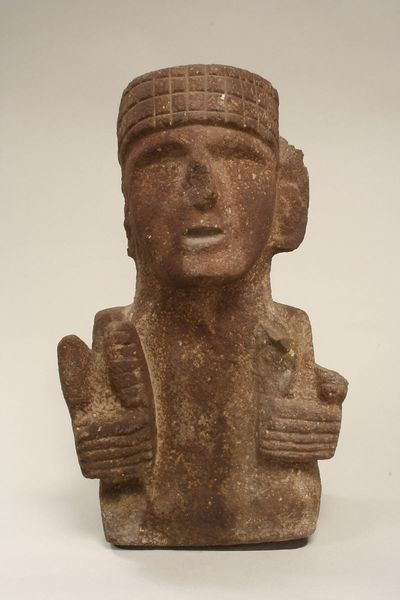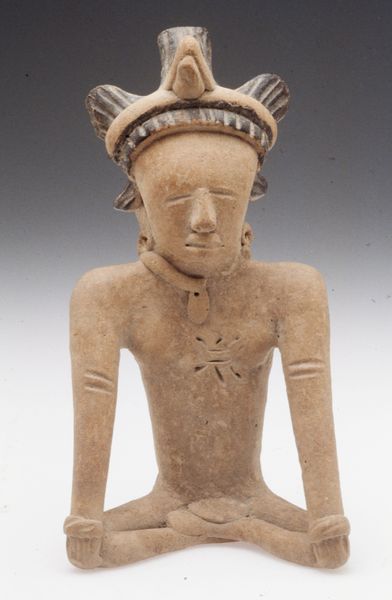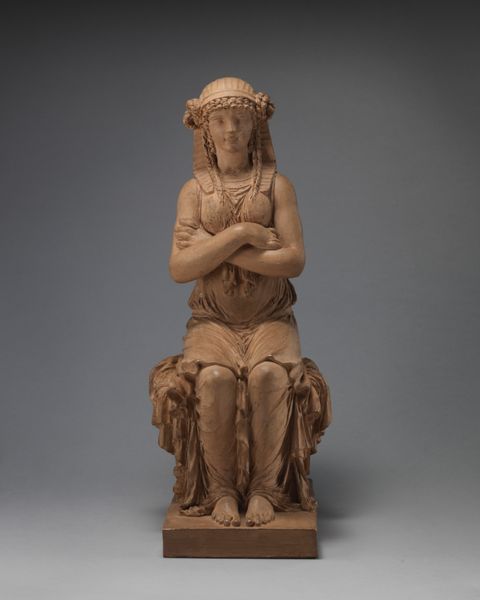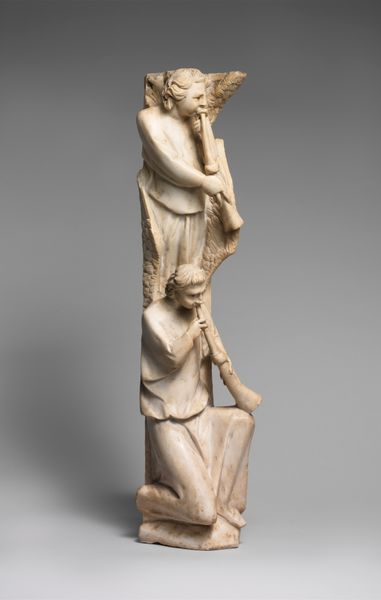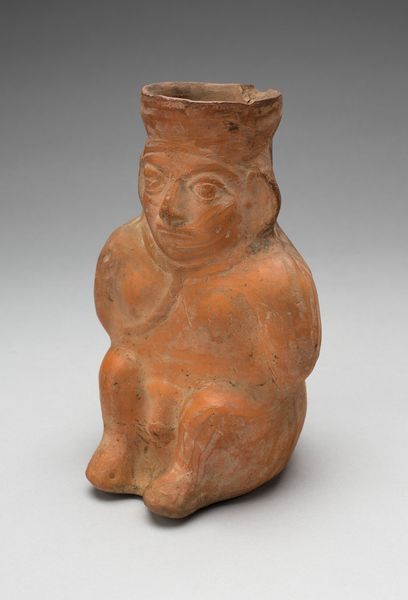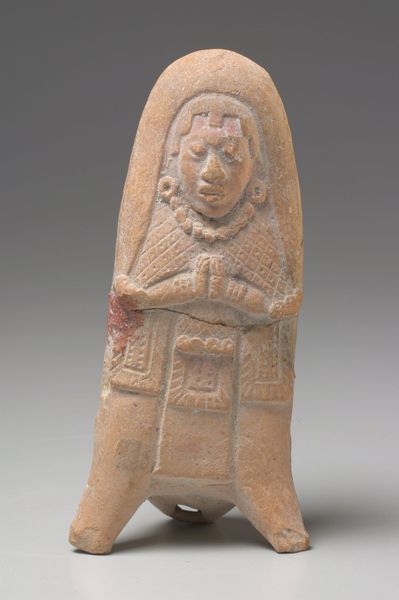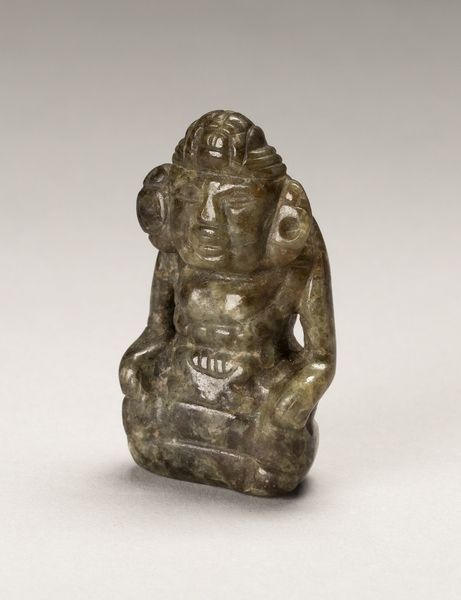
sculpture, ivory
#
neoclacissism
#
sculpture
#
ancient-egyptian-art
#
figuration
#
sculpture
#
decorative-art
#
ivory
Dimensions: without base: 14 in. (35.6 cm)
Copyright: Public Domain
Curator: Welcome. Before us stands "Egyptian God," a piece fashioned around 1780 by Clodion, also known as Claude Michel. Currently residing here at the Metropolitan Museum of Art, this sculpture invites a gaze into the Neoclassical fascination with ancient Egypt, skillfully rendered in ivory. Editor: You know, my first impression is the sheer audacity of it all! It's like, if an ancient Pharaoh walked into a Parisian salon. All the grandeur, but make it... boudoir? Curator: Exactly! Clodion, deeply influenced by the Neoclassical movement, blends Egyptian motifs with a European sensibility. His aesthetic marries the ancient and the contemporary. But consider the power dynamics. How does a Western artist’s interpretation of Egyptian deities echo colonialism and cultural appropriation? Editor: Well, there’s that… But before we get too heavy, can we appreciate the details? Look at how the ivory gives a smooth, almost tactile quality to the god's skin. And the lions flanking the throne are not ferocious; they're almost cuddly. It’s like, rawr, but make it *polite.* Curator: The softness of the ivory contrasts sharply with the rigid iconography typical of Egyptian art. By the 18th century, Egyptomania was in full swing. This interpretation reflects more about Europe's projection onto Egypt rather than any authentic understanding. Who benefits when one culture appropriates the symbols and aesthetics of another? Editor: Oof, right. It does make you think. But despite the thorny implications, there’s something undeniably seductive about Clodion's style. Like a forbidden romance. You know it's wrong, but the ivory is so smooth! Curator: The elegance and craft draw you in, I agree. But by looking at it, we are also accountable to the circumstances of its genesis and dissemination. How might the presentation change were this a discussion around repatriation of cultural heritage rather than an admiration of craft? Editor: Good point, really good point. I see it more as an artifact prompting critical thinking. The seductive quality you noted, its mere existence, forces us to reflect. Curator: Yes, it holds up a mirror to our history and our present. I, too, leave this space reconsidering these past interpretations as it sheds a new light on a modern-day experience.
Comments
No comments
Be the first to comment and join the conversation on the ultimate creative platform.

